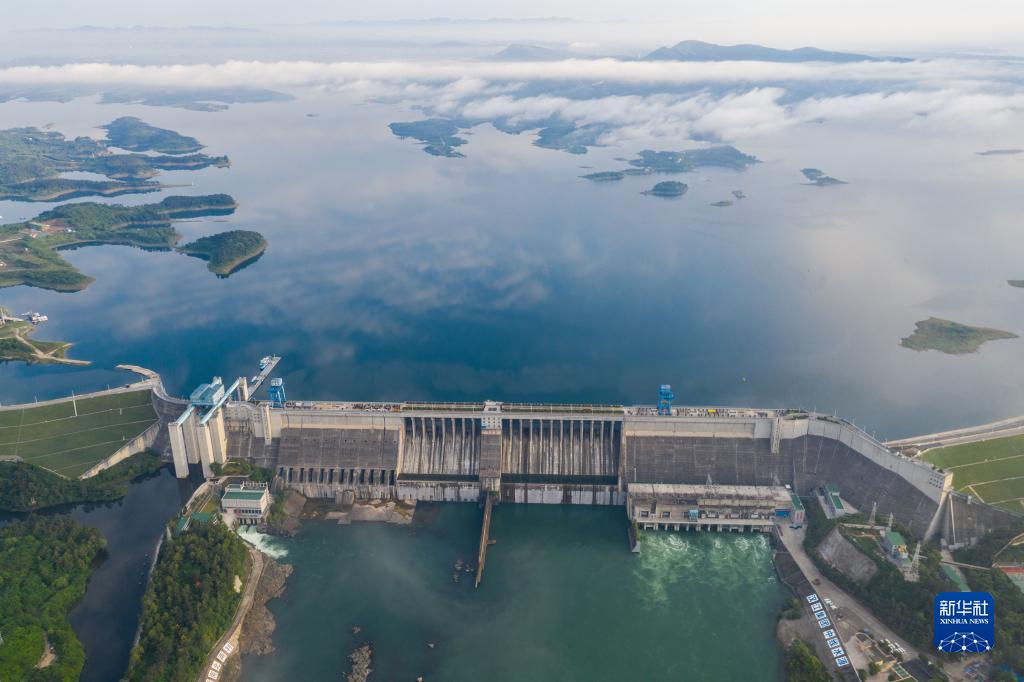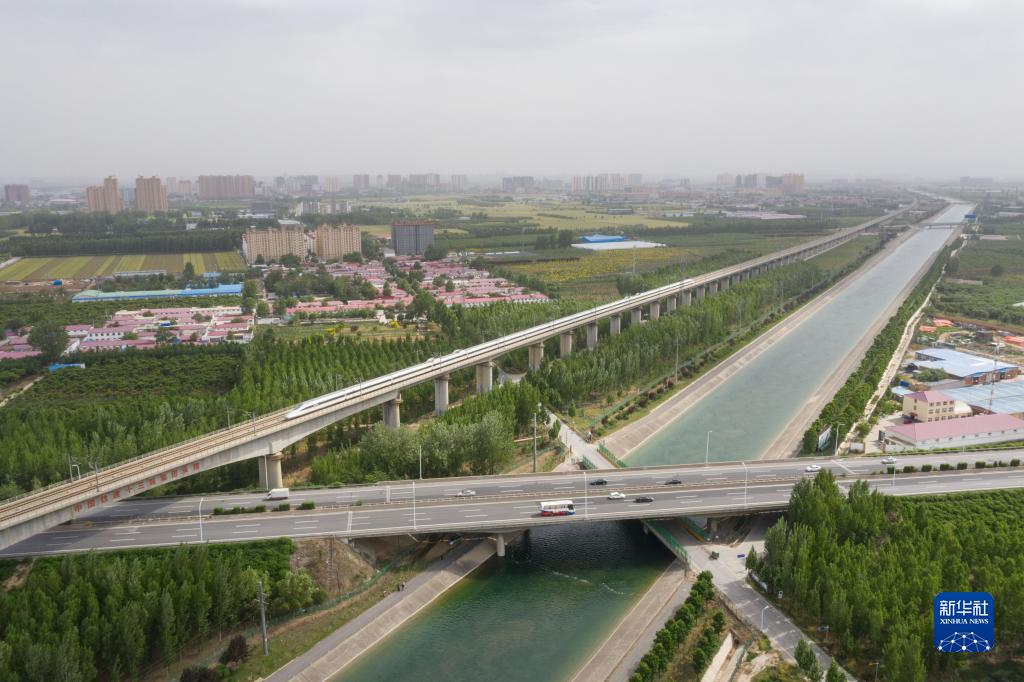Three big data show the benefits of South-to-North Water Transfer Project
Xinhua News Agency, Beijing, August 25thTitle: Three Big Data Show Benefits of South-to-North Water Transfer Project
Xinhua News Agency reporter Liu Shiping
On August 25th, the Yellow River crossing project of the Middle Route of South-to-North Water Transfer Project passed the completion acceptance of the design unit project hosted by the Ministry of Water Resources. So far, 155 design unit projects in the east and middle routes of the South-to-North Water Transfer Project have all passed the completion acceptance of the Ministry of Water Resources.
According to statistics, the South-to-North Water Transfer Project has now transferred more than 56 billion cubic meters of water and benefited more than 150 million people, fully demonstrating the benefits of this project.

This is the view of Danjiangkou Reservoir in danjiangkou city, Hubei Province (photo taken on May 20, 2021, photo of drone). Xinhua News Agency reporter Cai Yang photo
Major nodes of South-to-North Water Transfer Project: 155 design unit projects have all passed the completion acceptance.
The acceptance of the Yellow River crossing project in the middle route of South-to-North Water Diversion Project means that all 155 design unit projects in the east and middle routes of South-to-North Water Diversion Project have passed the completion acceptance, which also marks that the whole project has turned into the formal operation stage.
The east route of South-to-North Water Transfer Project starts from Jiangdu Water Control Project in Yangzhou City, and the Yangtze River water flows northward into Shandong. The middle line draws water from the first sluice of Taocha Canal of Danjiangkou Reservoir into the canal, and the south water flows thousands of miles, moistening Henan, Hebei, Tianjin and Beijing. Among the 155 design unit projects that have passed the completion acceptance of the Ministry of Water Resources, there are 68 in the east line and 87 in the middle line of the South-to-North Water Transfer Project.
The Yellow River crossing project that passed the acceptance this time is the control project of the middle route of South-to-North Water Transfer Project, and it is also the first time that China has used large-diameter shield construction to cross rivers. After the yellow river crossing project started in 2005, a series of technical problems were overcome. Since the completion of the project, the operation has been safe and stable.
The relevant person in charge of the Ministry of Water Resources said that all 155 design unit projects have passed the completion acceptance, which is a major node since the first phase of the South-to-North Water Transfer Project was completed and put into use, laying a foundation for promoting the completion acceptance of the first phase of the South-to-North Water Transfer Project and the high-quality development of subsequent projects. In the next step, the Ministry of Water Resources will accelerate the preparatory work for the completion and acceptance of the first phase of the East and Middle Route of the South-to-North Water Transfer Project, and continuously improve the comprehensive benefits of the project.

Near Yujiazhuang Village, north of Zhengding County, Shijiazhuang City, Hebei Province, the main canal of the Middle Route of South-to-North Water Transfer Project is intertwined with high-speed rail and highway (photo taken on May 24, 2021, photo of drone). Xinhua News Agency reporter Cai Yang photo
Water transfer exceeds 56 billion cubic meters: it has changed the water supply pattern in some areas in the north.
The first phase of the East and Middle Route of the South-to-North Water Transfer Project was completed in November 2013 and December 2014 respectively. According to the statistics of China South-to-North Water Diversion Group Co., Ltd., as of 8: 00 on August 25th, the east and middle routes of South-to-North Water Diversion Project have transferred 56.324 billion cubic meters of water. After deducting losses, the east and middle routes of the South-to-North Water Transfer Project have supplied 54.424 billion cubic meters of water to Henan, Hebei, Tianjin, Beijing and Shandong.
Experts believe that the South-to-North Water Transfer Project has changed the water supply pattern in some northern areas since it was fully flooded, and at the same time promoted the recovery of the ecological environment of rivers and lakes in the receiving area and the recovery of groundwater level, resulting in huge economic, social and ecological benefits.
As far as the middle route of South-to-North Water Transfer Project is concerned, the water quality of Danjiangkou Reservoir and the middle route is Class II standard of surface water quality and above. Drinking Yellow River water has been replaced by South Water in many places in Henan Province. More than 5 million people in Cangzhou, Hengshui and Handan in Hebei Province bid farewell to drinking high-fluorine water and bitter salt water for a long time because of South Water.
Beneficiary population exceeds 150 million: the level of water supply security has been improved.
The reporter learned from the South-to-North Water Diversion Group that by the end of December 2021, there were 42 cities benefiting from the first phase of the South-to-North Water Diversion Project. Among them, there are 24 middle-line beneficiary cities and 18 eastern-line beneficiary cities.
As far as the middle route of South-to-North Water Transfer Project is concerned, South Water has become a new lifeline for water supply in some large and medium-sized cities along the route. Among them, more than 70% of Beijing’s urban water supply is South Water; Almost all the water supply in the main urban area of Tianjin is south water; The level of water supply security in Henan and Hebei has also been improved due to the South Water.
The relevant person in charge of the South-to-North Water Diversion Group said that the total beneficiary population of the east and middle routes of the South-to-North Water Diversion Project is close to 153 million. Compared with 2020, the number of beneficiaries has increased by about 10 million.
The person in charge said that the main reasons for the increase in the beneficiary population are: in 2021, Hebei Province carried out the rural drinking water source replacement project, which increased the beneficiary population of South Water by 7,815,500; In Beijing, the newly-built water receiving plant using South Water has increased the beneficiary population by 1 million. Tianjin has increased its beneficiary population by 1 million.